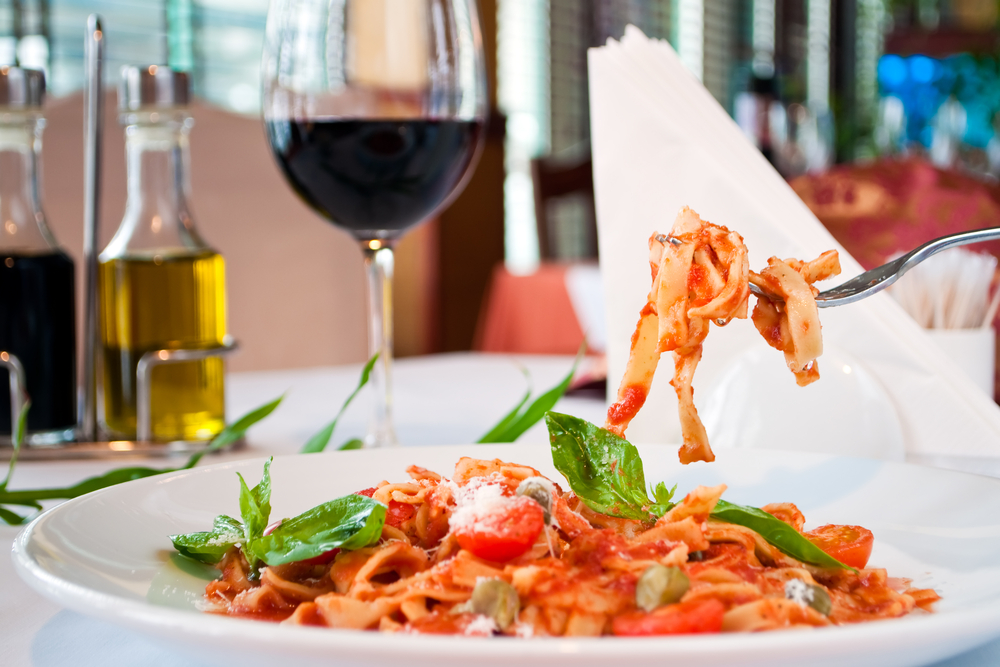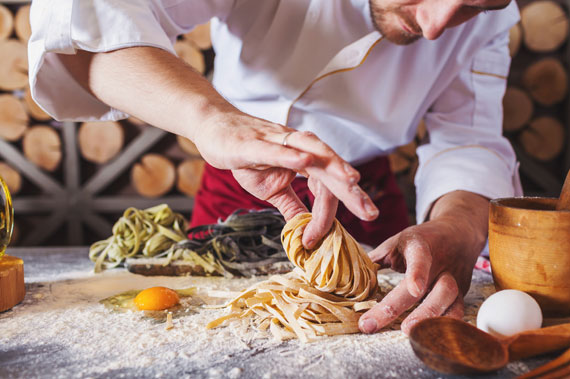There are few pairings in life that have stood the test of time as well as food and wine. When the perfect pairing is achieved, a golden, winning combination is unlocked, taking the senses on an unrivalled journey that can transport you to shores far and wide. The perfect pairing however, can be difficult to achieve, even when just considering our own native British cuisine, but when attempting to partner food from foreign lands, this challenge only becomes harder.
Italian cuisine is a firm favourite for Brits looking for something different, in fact, Italian restaurants were the public’s number one destination when dining out last year. When cooking at home, Italian is another steadfast option, and whether your home-alone, planning for a hot-date or catering for a dinner party for friends, nailing your drink choices to complement your food will only maximise the enjoyment your enjoyment of your meal.
Developing tasty food and wine pairing can be started by breaking down the complexities and simply experimenting with the key main flavour profiles. Here’s a closer look at the key pairings for food and wine pairing and why each one works. You’ll soon be one step closer to matching your food and wine like you’re a professional chef.
6 Key Tips For Pairing Wine & Food
If you’re just getting started, you’ll find these tried and tested general methodologies produce some great pairings. That said, as you get more familiar with different wines, you’ll become confident and can experiment with new combinations.
- Your wine should be more acidic in taste than the food.
- If the main dish is sweet in taste, the wine should be sweeter than the food.
- Avoid overpowering your palate and ensure wine has the same flavour intensity as the food.
- Red wines generally pair best with boldly flavoured meat dishes
- White wines usually pair best with light-intensity meats such as fish
- It is better to match the wine with the sauce than with the meat, as that is the main source of the flavour
Pairing wine with types of Italian dish
Pairing wine with pasta
Matching wine with pasta is hugely dependent on the sauce, as that is the core part of the flavour. We’ve compiled the wine matches for the 3 most popular sauces.
White sauce
Any wine chosen for a dish such as a Carbonara, will need to match and cut through the taste and texture of the creamy sauce. A good quality Pinot Grigio is a great place to start. You want a light and crisp taste with citrus fruits. Look for Pinot Grigio from regions in the northeast of Italy.
Meat sauce
Bolognese or beef ragu sauces are rich and comforting, with a huge depth of flavour when cooked. Because of the inclusion of meat and depth of flavour a ragu sauce can achieve, you can look to feature wines with more power. Hearty red wines from in Tuscany feature complex flavours of earthy spices, leather and mellow oak, all of which can bring any meat based ragu sauce to life.
Red sauce
Arrabiata is a classic tomato based sauce, a real recognised classic of Italian cuisine. Lighter versions of this sauce can match very well with a wide range of Italian whites such as Verdicchio, Pinot Grigio and Gavi. Once you begin to add basil, garlic and other vegetables, then the lighter, red wines, also start to be great potential matches, including Chianti from Tuscany and Dolcetto from Piedmont.
Pairing wine with risotto
Wine matching for risotto is similar in process to matching wine with pasta. No one wine fits all; it depends on the key recipe ingredients and accompaniment to this classic dish. Light risotto, made with vegetables or seafood, requires the crisper white wines from Northern Italy. Mushroom or red meat risottos can be rich and savoury, allowing a good match with medium bodied red wines, such as Pinot Nero or Dolcetto.
Pairing wine with pizza
Italian red wine is the perfect match for pizza. It’s a great example of the wine and food from similar regions matching each other perfectly, as they are set up to compliment tomato sauce and cut through the melted mozzarella. Try a wine made from the Chianti region or Light Valpolicella from the Veneto region. Generally, light, dry Italian whites will work should you decide to top your pizza with ingredients such as ricotta or fish.
At Bella Cosa, we have a comprehensive wine list that offers the perfect complement to both our exquisite lunch and dinner choices. Let us suggest some pairings for you to sample and ensure that your meal is perfectly complimented. Book your table and join us by the river.







